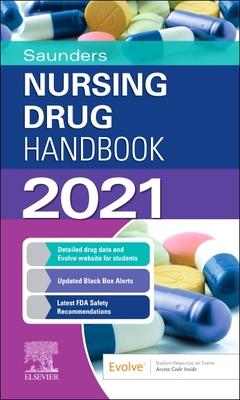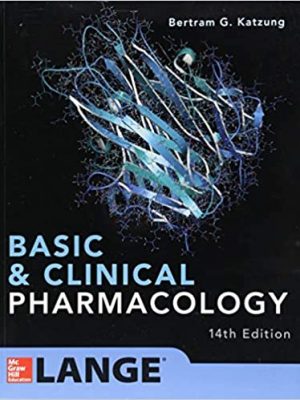LC-NMR: Expanding the Limits of Structure Elucidation 2nd Edition
LC-NMR: Expanding the Limits of Structure Elucidation Second Edition (Chromatographic Science Series):
The much-anticipated second edition provides guidance in setting up LC-NMR systems, discussion of LC methods that are compatible with NMR, and an update on recent hardware and software advances for system performance, such as improvements in magnet design, probe technology, and solvent suppression techniques that enable unprecedented mass sensitivity in NMR. This edition features methods to quantify concentration and assess purity of isolated metabolites on the micro scale and incorporates computational approaches to accelerate the structure elucidation process. The author also includes implementation and application of qNMR and automated and practical use of computational chemistry combined with QM and DFT to predict highly accurate NMR chemical shifts. The text focuses on current developments in chromatographic-NMR integration, with particular emphasis on utility in the pharmaceutical industry. Applications include trace analysis, analysis of mixtures, and structural characterization of degradation products, impurities, metabolites, peptides, and more. The text discusses novel uses and emerging technologies that challenge detection limits as well future directions for this important technique. This book is a practical primary resource for NMR structure determination―including theory and application―that guides the reader through the steps required for isolation and NMR structure elucidation on the micro scale.
Additional ISBNs:
∗ eText ISBN: 1351023721, 978-1351023726, 9781351023726
- See additional information on the Amazon.
More Details
LC-NMR: Expanding the Limits of Structure Elucidation 2nd Edition:
Cover
Half Title
Series Page
Title Page
Copyright Page
Dedication
Table of Contents
Foreword
Preface
Author
Chapter 1. Introduction to LC-NMR
1.1. Historical Review
1.2. Flow and NMR
1.3. Setting up the LC-NMR System
1.3.1. Continuous-Flow Mode
1.3.2. Direct Stopped-Flow Mode
1.3.3. Storage Mode
1.3.4. Calibrating the System
1.3.5. Preparation of a Solid-Phase Extraction System
1.3.6. Adding More Sample to a Cartridge
1.4. Solvent Requirements in LC-NMR
1.5. Solvent Suppression and Referencing
1.6. The Deuterium Lock
1.7. The Solvent-Gradient Ramp
1.8. Diffusion
1.9. Shimming
1.10. Acquisition Parameters
1.11. Chemical-shift Tracking
1.12. Other Considerations
1.13. Sources of Error
1.14. Summary
Chapter 2. NMR Theory
2.1. Magnetic Properties of Nuclei
2.2. Data Acquisition
2.3. Relaxation of Nuclei
2.3.1. Spin-Lattice Relaxation Time T1 (Longitudinal)
2.3.1.1. Relaxation and Molecular Motion
2.3.1.2. Dipole-Dipole Interaction “Through Space”
2.3.1.3. Paramagnetic Relaxation
2.3.1.4. Chemical Shift Anisotropy Relaxation
2.3.1.5. Scalar Coupling Relaxation
2.3.1.6. Electric Quadrupolar Relaxation
2.3.1.7. Spin Rotation
2.3.2. Spin-Spin Relaxation Time T2 (Transverse)
2.4. The Chemical Shift
2.5. Spin Coupling
2.6. Nuclear Overhauser Effect (NOE)
2.6.1. Molecular Weight and Maximum NOE
2.6.2. Time Dependence of NOE – Mixing Times
2.7. Coupling of HPLC with NMR
Chapter 3. Separation Methods
3.1. Modes of Separation
3.2. General Method Development Strategies
3.3. Column Packing Types
3.4. Detector Selection
3.5. RPC Method Development and Compatibility with NMR
3.6. Integration of CE and NMR
3.7. Transitioning from Analytical to Preparative Chromatography
3.8. General Considerations
Chapter 4. NMR Instrumentation and Probe Technologies
4.1. Instrumentation Configuration
4.2. The Magnet
4.3. Room Temperature Flow Probe
4.4. Microcapillary Probes (Room Temperature)
4.4.1. Microcoil Capillary Flow Probes (Room Temperature)
4.4.2. Microcoil Tube Probes (Room Temperature)
4.5. Cryogenically Cooled Probes
4.5.1. Cryo-flow Probe
4.5.2. Cryo-capillary Tube Probe
4.5.3. Affordable Cryogenically Cooled Probes
4.6. Probe Coil Geometries
4.7. Probe Sensitivity Comparison
Chapter 5. NMR-Associated Isolation Technologies
5.1. Stop Flow
5.2. Loop Collector
5.3. Solid-Phase Extraction (SPE)
5.4. Non-chromatographic Flow NMR
5.5. Direct Injection NMR (DI-NMR)
5.5.1. Applications of DI-NMR
5.5.2. Comparisons
5.6. Capillary Electrophoresis and NMR
5.6.1. Modes of Electrophoresis-NMR and Effects on NMR Spectral Properties
5.6.2. NMR Observe Volume
5.6.3. Capillary Electrochromatography (CEC)-NMR
5.6.4. CE-NMR in Practice
Chapter 6. NMR Experiments
6.1. Solvent Suppression
6.2. Structure Elucidation Experiments
6.2.1. Heteronuclear Correlation Experiments (HSQC, HMQC, and HMBC)
6.2.2. Wet Solvent Suppression and 2D NMR
6.2.3. Decoupling and Power Levels in 2D NMR
6.3. NOE Experiments
6.3.1. Sample Considerations
6.3.2. Processing (NOESY and ROESY) 2D Spectra
6.3.3. Chemical/Conformational Exchange
6.3.4. Spin Diffusion (Problematic for Large Molecules)
6.3.5. NOE, Conformational Analysis, and Distance Determination
6.3.6. ROESY – Quantitative Distance Determination
Chapter 7. Applications
7.1. Degradation Products
7.2. Impurities
7.3. Trace Analysis
7.4. Analysis of Mixtures
7.5. Formulation Adduct
7.6. Tautomer Kinetics
7.7. Unstable Products
7.8. Metabolites
7.9. cITP Isolates
7.10. Natural Products
7.11. Proteins/Peptides
Chapter 8. Other Specialized Flow NMR
8.1. NMR and Parallel Detection
8.2. Data Processing and Deconvolution of Parallel Data
8.3. Parallel Probe Construction
8.3.1. Multiplex Four-Coil Probe
8.3.2. Multiplex Dual Probe
8.4. Microprobes
8.5. Advancements in Multiple-Coil Probe Design
8.6. Biological Screening and Flow NMR
8.7. NMR and Microreactors
8.8. Signal-to-Noise Ratio (Microcoils)
8.9. Microprobe Design (Microcoil/Microslot/Microstrip)
8.10. Future Directions
8.10.1. Portable NMR and Sensitivity
8.10.2. DNP and NMR Sensitivity
Chapter 9. Quantitation of Isolated Compounds
9.1. Background of Quantitative NMR (qNMR)
9.2. Comparison of qNMR with HPLC Methods
9.3. Selecting a qNMR Reference Standard
9.3.1. External versus Internal qNMR Reference
9.3.2. Calibration Procedure
9.4. Instrument Settings, Solvent Selection, Rapid Spectral Analysis
9.5. Types of qNMR Calculations
9.5.1. Concentration (ERETIC2)
9.5.2. Mass of Compound (Internal Standard and ERETIC)
9.5.3. Purity
9.6. Applications
Chapter 10. QM/DFT Chemical Shift Prediction
10.1. Computational Methods
10.1.1. Method Evaluation
10.1.2. Systematic Errors
10.2. Statistical Distribution of Chemical Shift Differences (1H, 13C, and 15N NMR)
10.3. NMR Referencing
10.3.1. TMS
10.3.2. Nitromethane/LNH3
10.3.3. Linear Scaling
10.4. Automated Program Development
10.4.1. HiPAS Holistic In-silico Prediction Application Software
10.4.2. DP4, DP4+, and DiCE Diasteromeric In-silico Chiral Elucidation
10.5. Applications
10.5.1. Regioisomers
10.5.2. Tautomers
10.5.3. Natural Products
10.5.4. Assignment Ambiguities
10.5.5. Decomposition Products
10.5.6. Diastereomers
10.6. Summary
Glossary
Index




























 Dentistry
Dentistry
Reviews
There are no reviews yet.